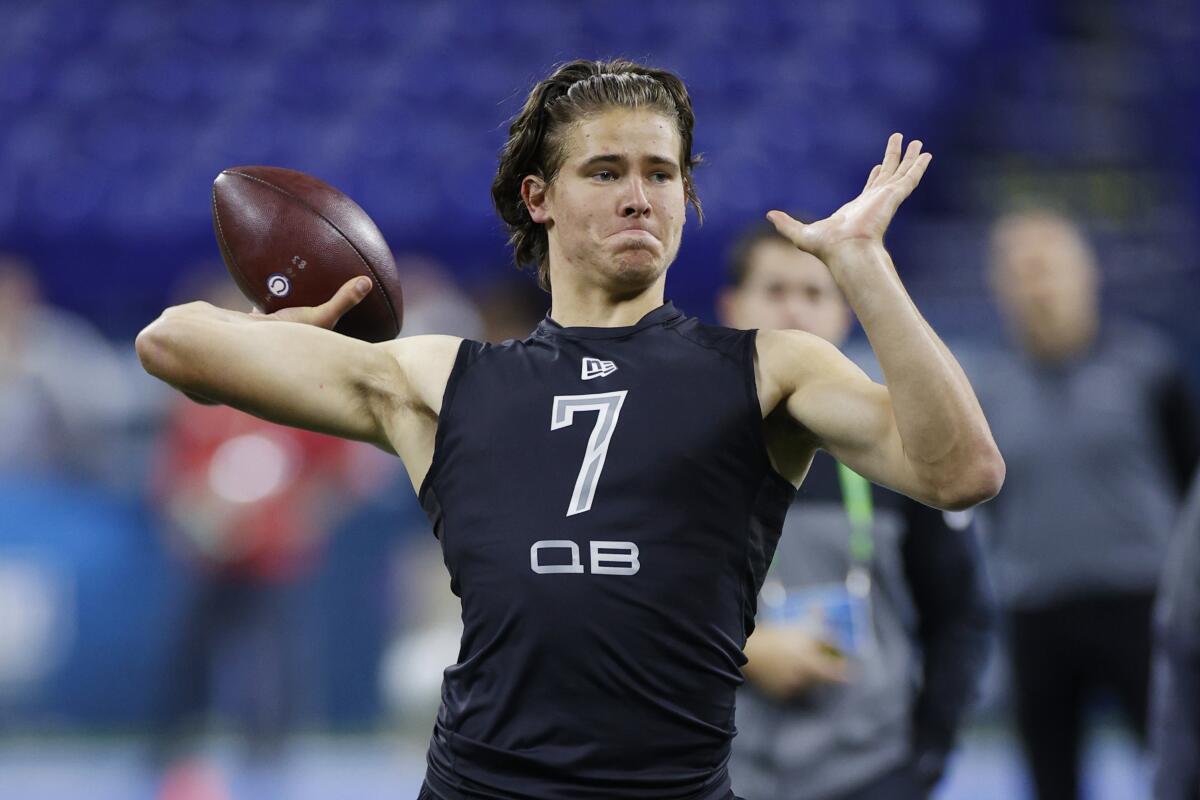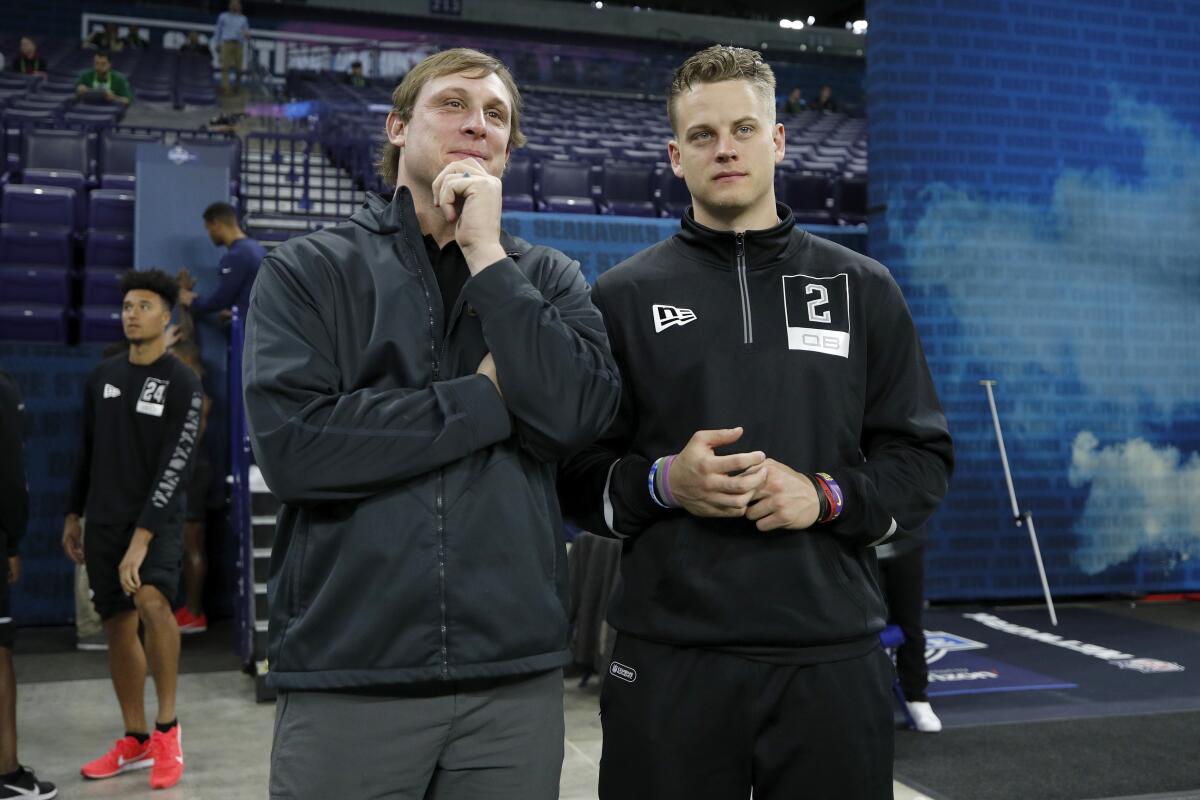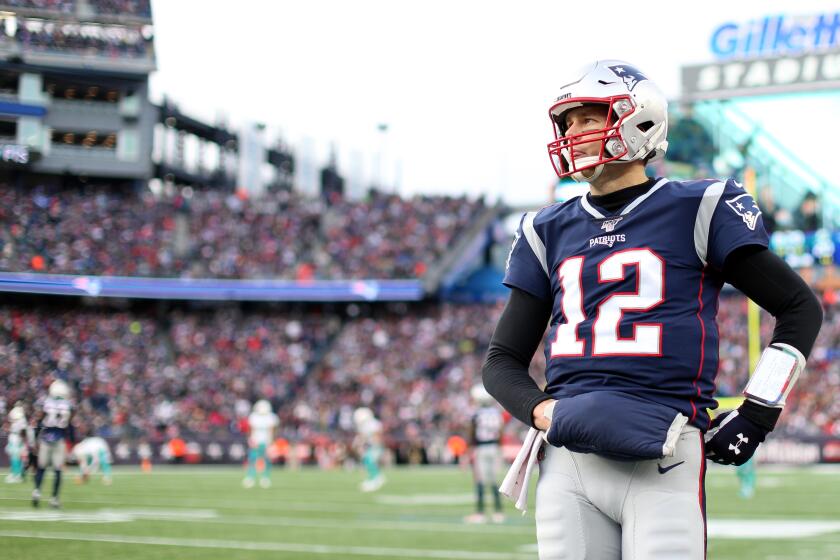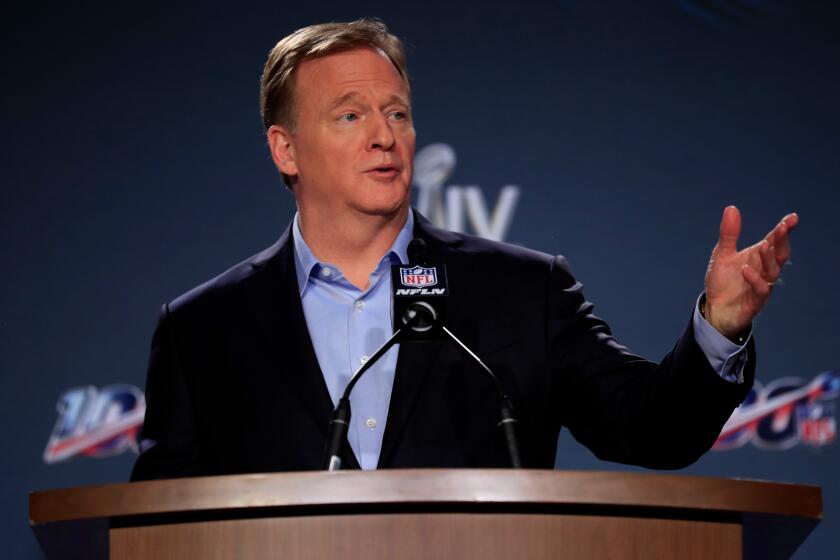Finding the next great quarterback remains the ultimate challenge for NFL teams

- Share via
The separation of a receiver and defender down to the inch. The spin rate and trajectory of the football. A passer’s career rating when throwing to a specific spot on the field. The NFL tracks and collects all of that data.
What football has yet to figure out is perhaps the most important question when it comes to winning and losing: Which young quarterbacks are bound for success?
All the statistics and body metrics, interviews and personality tests still cannot fully paint a picture of a player lined up in the most complex position in sports, yet teams still invest tens of millions of dollars in hopes they have found The One.
It’s not a blind stab; teams know what they like when they see it. But it’s not an exact science, either.
“It’s the hardest thing to evaluate, the heart and the head,” Tampa Bay coach Bruce Arians said this week at the annual scouting combine. “I call it grit. Whether they have leadership skills. Why guys follow them, and why they can make guys believe in them. That’s the hardest thing to find out.”
The clock is ticking on Robert Kraft & Co. to hammer out a deal with Tom Brady sooner rather than later, or let him walk out the door.
Careers rest on the decision. The Chicago Bears won’t soon forget they traded up to take Mitchell Trubisky second overall in 2017, for instance, in a draft when Patrick Mahomes went 10th, and Deshaun Watson 12th. Or the year before, when seven quarterbacks were selected before the Dallas Cowboys grabbed Dak Prescott in the fourth round.
“I think the biggest deal at the quarterback position is the transition from the way they play in college to what we play in the NFL,” said Mike Mayock, general manager of the Las Vegas Raiders. “The verbiage, the huddles, the leadership, and then once the ball is snapped, when that picture changes… your ability, with a group of grown men trying to knock you down, to stay in the pocket, handle it, go through the progressions, and find the right guy to get it to.”
The 2020 quarterback class is robust with talent and success at the college level, from Lousiana State’s Joe Burrow, the leading candidate to go No. 1 overall, to Alabama’s Tua Tagovailoa, to Utah State’s Jordan Love, to a trio of 6-foot-6 redwoods from the Pacific Northwest: Oregon’s Justin Herbert, Oregon State’s Jake Luton, and Washington’s Jacob Eason.
In large part due to the trickle-up effect of lower-level offenses to the NFL, a lot of these players haven’t taken a snap from under center since high school or earlier. That makes them even more difficult for pro teams to evaluate.

“College football has evolved to the point where that game is coming into our league,” Indianapolis Colts general manager Chris Ballard said. “You see the running quarterbacks, and you see it with the [run-pass option] stuff… I’ve always said they’ve got to have enough escapability, enough feet and accuracy. Those are things you just can’t teach. Can you get a little better? Yes. Can you get it dramatically better? No.”
Burrow, the Heisman Trophy winner who threw for 463 yards and five touchdowns (plus one rushing) in the national championship game against Clemson, feels ready to make the step up. He likely will be the first pick of the Cincinnati Bengals.
“I think my pocket presence is the thing that will translate most,” he said. “But obviously going into the league you can improve in every area. I’m not focused on one little thing here and there. I’m focused on just improving my game overall. The speed of the game, the concepts, the reads, the defenses are all more complex now. I’m trying to better myself as well.”
NFL owners have plenty of reasons for wanting to quickly ratify a new collective bargaining agreement, but the players might want to slow things down.
In the ramp-up to the draft, he has been working with Jordan Palmer, the preeminent coach of quarterback prospects making the transition from college to the pros.
“The future of the position — and this is what has been going on — is about the quarterback’s ability to create time and space,” Palmer said. “The reason for that is the pass rush is consistently better than the pass protection.”
Because NFL practices involve less and less hitting during the week, Palmer said, offensive linemen don’t get nearly as much time to work on their blocking as they once did. That puts even more of a premium on quarterbacks buying time, and making the most of plays that have broken down.
That means more pressure on young quarterbacks to perform outside the structure of an offense. And more leaps of faith by talent evaluators trying to hit a moving target by picking the right guy.
Chargers coach Anthony Lynn summed it up when asked if he prefers a mobile quarterback to a classic drop-back passer.
Said Lynn: “I prefer a winning quarterback.”
More to Read
Go beyond the scoreboard
Get the latest on L.A.'s teams in the daily Sports Report newsletter.
You may occasionally receive promotional content from the Los Angeles Times.













